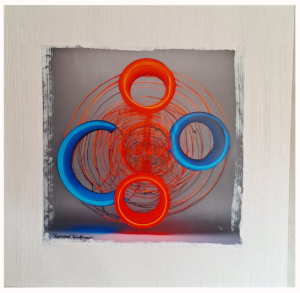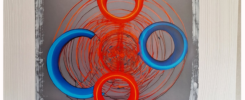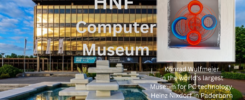Every Age Has Its Art: AI and the Future
Art has always been a reflection of its time. It mirrors cultural movements, technological innovations, and societal values. In today’s era of digitalization and artificial intelligence (AI), the world is witnessing a new artistic revolution: AI art. This form of art, born from algorithmic processes and machine learning, not only challenges traditional notions of creativity but also opens doors to unprecedented possibilities.
Konrad Wulfmeier, a pioneer in the realm of AI art, describes his approach as „QuantumNatur-Art“—a fusion of nature and technology. In this article, we explore why AI art represents the art of our time and how it is shaped by the collaboration of humans and machines.
The Intersection of Technology and Art
Every significant epoch in art history has been shaped by technological innovations. From the invention of perspective during the Renaissance to photography in the 19th century, art and technology have always gone hand in hand. Today, artificial intelligence takes this symbiosis to a new level.
AI-generated artworks are created using algorithms that access data, analyze it, and generate visual or auditory pieces. However, this does not exclude humans from the creative process. Instead, AI becomes a tool that supports and extends artistic vision.
Wulfmeier explains: “AI is my partner, not my replacement. I define the parameters, select the data sources, and interpret the results. The final piece bears my signature.” This interaction between human and machine introduces a new dimension of creativity, captivating and challenging audiences alike.
The Uniqueness of AI Art
One frequently debated topic in AI art is originality. Can an artwork generated by an algorithm be unique? The answer lies in the role of the artist. It is the human who controls the algorithm, selects inputs, and refines results.
Konrad Wulfmeier demonstrates this impressively in his practice: “I combine elements of nature with the precision and creativity of AI. Although the machine performs the calculations, I decide which results are developed further and how they are ultimately presented.” This blend of human instinct and machine intelligence creates works that feel both familiar and alien—a reflection of our hybrid world.
One example is the piece QuantumNatur-Art – White, created on August 9, 2024, in Salzkotten, Germany. This unique artwork was crafted on acrylic canvas through a combination of handwork and AI generation. Measuring 80 x 80 cm and themed „White,“ it exemplifies the harmonious fusion of natural aesthetics and algorithmic precision. The piece carries identification number 495101 and is accompanied by a certificate guaranteeing its provenance and authenticity.
on acrylic canvas through a combination of handwork and AI generation. Measuring 80 x 80 cm and themed „White,“ it exemplifies the harmonious fusion of natural aesthetics and algorithmic precision. The piece carries identification number 495101 and is accompanied by a certificate guaranteeing its provenance and authenticity.
Provenance in AI Art
Another intriguing aspect of AI art is its provenance—the history of an artwork. In traditional art, ARTMO provenance encompasses the documentation of its origin, ownership, and exhibitions. But how does one document the creation of a digital or AI-generated piece?
Here, blockchain technology plays a crucial role. It allows every step of the creative process to be recorded transparently and immutably. From the algorithm used to the input data and the artist’s refinements, every phase can be traced. This technology not only builds trust but also transforms AI artworks into unique, traceable objects.
The Role of the Gallery in the Digital Age
Traditional galleries face the challenge of adequately presenting AI art. Digital platforms and virtual exhibitions are gaining importance as they optimally showcase the interactive and often dynamic nature of AI art.
Online galleries like Wulfmeier’s own platform QuantumNatur-Art are pioneers in this field. They provide not only a stage for AI art but also a way to document and make the creative process accessible. Wulfmeier’s works invite viewers to question the boundaries between technology and art and to experience a new form of aesthetic engagement.
The Global Discourse on AI Art
To bring AI art to international attention, a broad discourse is essential. Platforms like Artnet, CreativeApplications.net, and Wired play a key role in introducing the topic to a global audience. International exhibitions such as Ars Electronica or the Lumen Prize further contribute to the acceptance and understanding of AI art.
Konrad Wulfmeier plans to present his works in upcoming international exhibitions to deepen the dialogue between artists, technologists, and audiences. He emphasizes: “The future of art lies in the collaboration between humans and machines. It’s an opportunity we should embrace.”
Conclusion: The Art of Our Time
AI art is more than just a technological experiment. It is an expression of our time, a testament to the infinite possibilities that emerge when creativity meets technology. Through artists like Konrad Wulfmeier, who shape this new era, it becomes clear that humans remain the central creators—even in a world increasingly influenced by machines.
The question is not whether AI art is art but how it enriches our understanding of creativity and originality. Every age has its art—and ours is defined by the symbiosis of human and machine.
© 2025 Konrad Wulfmeier | Master Code™ – QuantumNature-Art

